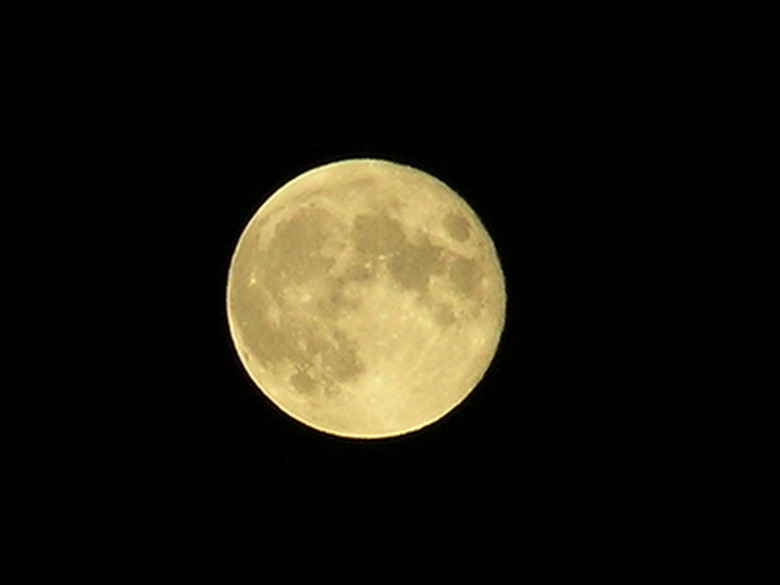The Explanation Of Phases Of The Moon
When the moon is visible in the night sky it can be seen to go through "phases"–that is, it appears to change shape in a cycle from night to night. The beginning of this cycle is called a "new moon," when almost none of the moon can be seen, which progresses to a "full moon" and back again in around 29 days, known as a lunar month. Why the moon appears to change shape in the sky can be explained by how the moon orbits the Earth.
Basics
Basics
For the purpose of illustration imagine the earth remaining in a fixed place in space, rotating on its axis—the moon orbits the earth and itself spins on an axis. The process of the moon completing both a full orbit of the earth, and completing a complete revolution on its axis takes exactly 29.5 days. This is why when we look at the moon we always see the same crater pattern. As the moon orbits the Earth and rotates, light from the Sun strikes it in different areas, changing the extent to which it is visible on earth. This interplay between the earth, moon and light from the sun is what causes the phases of the moon.
New Moon
New Moon
Imagine the earth, moon and sun arranged in a straight line, with the moon situated in the middle. Light from the sun lights up the side of the moon facing away from the earth, presenting the earth with the darkened side. This is called a new moon. A new moon is traditionally considered the start of the lunar month or the first phase of the moon.
Waxing Crescent to First Quarter
Waxing Crescent to First Quarter
Now imagine the moon moving from the middle of the line made up of the earth, moon and sun to a position on the left of the earth. This occurs as the moon moves in its orbit and causes a waxing crescent moon to appear in the sky. "Waxing" is the term used to describe the moon when it is growing toward a full moon. As the earth moves into this new position, the light from the sun begins to illuminate the side of the moon which can be seen from the earth, causing a crescent and eventually a half or first-quarter moon.
First Quarter to Full Moon
First Quarter to Full Moon
In the next phase the moon progresses from its position on the left of the earth to behind the earth. In contrast to the new moon phase, with the moon between the earth and the sun, the earth is now in the middle between the moon and the sun. This allows light from the sun to light up the entire side of the moon which faces the earth, causing a full moon. The stage before a full moon but after a first quarter is known as waxing gibbous—the opposite of a crescent moon.
Full Moon to Last Quarter
Full Moon to Last Quarter
The final phases of the moon occur when the moon moves from behind the earth in its orbit to a position on the right in the imaginary line. This presents the earth with another half moon, this time known as a last quarter, because the moon is progressing away from a full moon toward a new moon again. After the full moon phase the moon is described as waning, because it is reducing in size. A waning gibbous moon occurs between a full and last quarter moon, and a waning crescent moon occurs after a last quarter, just before a new moon.
Once the moon has completed a full orbit it resumes its place between the earth and the sun, creating a new moon and restarting the moon cycle.
Cite This Article
MLA
Stefansson, Jon. "The Explanation Of Phases Of The Moon" sciencing.com, https://www.sciencing.com/explanation-phases-moon-6395764/. 24 April 2017.
APA
Stefansson, Jon. (2017, April 24). The Explanation Of Phases Of The Moon. sciencing.com. Retrieved from https://www.sciencing.com/explanation-phases-moon-6395764/
Chicago
Stefansson, Jon. The Explanation Of Phases Of The Moon last modified March 24, 2022. https://www.sciencing.com/explanation-phases-moon-6395764/
